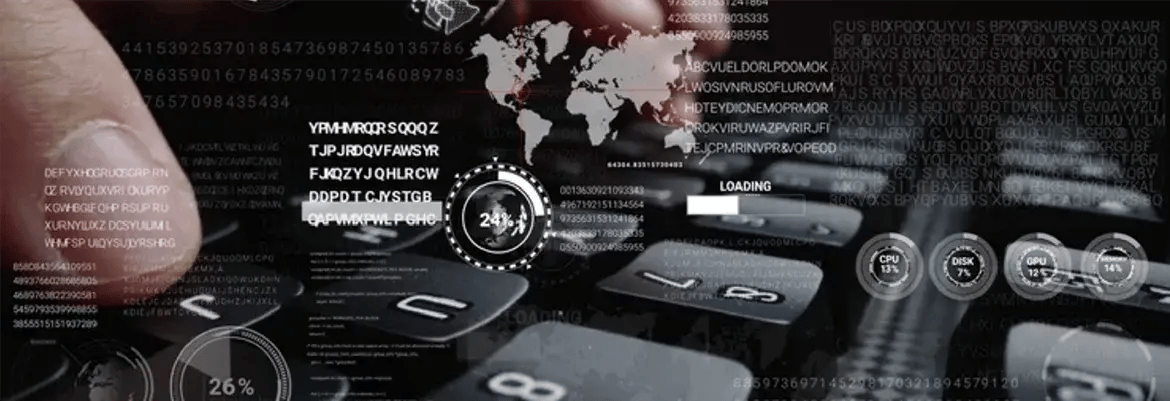AI And Cybersecurity: How To Make Them Work Together
Date: 22 October 2022

The importance of cybersecurity is no secret. In today's world, data breaches and cyber-attacks are becoming more and more common. And as our reliance on technology grows, so does the importance of cybersecurity. There's an increasing concern from organisations, governments, and other stakeholders to have robust cybersecurity systems and policies in place.
However, as attackers develop more sophisticated ways to break into systems, it's becoming increasingly clear that traditional cybersecurity measures may no longer be enough. This is where the term artificial intelligence or AI comes in. To ensure better security for your critical infrastructure and sensitive information, AI and cybersecurity need to work together.
Here are different ways to make AI and cybersecurity work together more effectively:
1. Use AI To Build Cybersecurity ModelsThe first step into a robust cybersecurity system lies in building secure and frictionless machine learning pipelines used in cybersecurity. This is because AI-based models are only as good as the data they're trained on. To build these AI models, security teams need to have access to large amounts of high-quality data. This can be a challenge as many organisations are unwilling to share their data due to concerns about privacy and security.
But with the right tools and protocols in place, data can be shared securely and used to train AI models that can help improve security. For example, by using data from past cyber-attacks, AI can be used to build models that can detect and prevent similar attacks in the future. The best part is that building these models is often straightforward as AI allows building end-to-end models with meta-cloud utilisation and visibility control. Moreover, some resources allow learning with free plans that can get you started quickly.
2. Use AI To Monitor And Respond To ThreatsAnother way AI technologies can improve security is by monitoring and responding to threats in real time. AI can detect and respond to cyber-attacks as they happen. By doing so, AI can help reduce the time it takes to detect and respond to threats and/or ransomware attacks, ultimately helping to improve your overall cybersecurity posture.
AI needs access to data from various sources, including network traffic, system logs, and user activity. It can then use this data to identify patterns that may indicate an attack. Once an attack has been detected, AI can then take action to mitigate the threat, such as by blocking malicious traffic or quarantining infected systems.
3. Threat ExposureMany hackers always stay ahead of trends in cybersecurity to find new ways to exploit systems. For example, during the start of the COVID-19 pandemic, there was an increase in phishing attacks that exploited the fear and uncertainty around the virus. Also, with many people working from home, there has been an increase in attacks targeting remote working solutions, such as VPNs (virtual private networks). This increased the security risk for many organisations.
With the number of corporate endpoints increasing as a result of the remote working revolution, robust and innovative endpoint security has become much more imperative. Many IT professionals are now focused on the security of relatively new IT components like containers, (read more on Kubernetes vs Dockers), and devices that connect to the corporate network here and there, such as mobile phones, tablets, etc.
AI can help to identify these trends and predict future attacks. You can create models that prioritise threat exposure and help you understand what areas of your organisation are most at risk. This way, you can take steps to mitigate these risks before they result in an attack.
Using AI can give you a real-time view of the cybersecurity landscape and identify threats that may be difficult to spot.
4. Penetration Testing And Security AuditsPenetration testing is the process of trying to break into a system to test its security. It's usually done manually, but AI can be used to automate this process. AI can be used to identify vulnerabilities in systems and then generate exploit code that can be used to take advantage of these vulnerabilities.
Security audits are another area where AI can be useful. AI can be used to automatically audit systems and identify potential security issues. For example, AI can be used in smart contract audits to identify vulnerabilities in smart contract codes that may be exploited. This makes the whole process of security auditing more efficient and accurate.
5. Risk Prediction & Risk ManagementAI can predict the risks of cyber-attacks and identify the factors that make an organisation more likely to be attacked. It can study past attacks and identify patterns that may be indicative of future attacks. This information can then be used to create a risk profile for an organisation. This risk profile can prioritise security efforts and help organisations focus on the most at-risk areas.
Using strong AI in breach risk prediction is important because it can filter through a large amount of data to find the tiny details that make all the difference. AI systems can help you predict when, where, and how a cyber-attack will happen so you can take necessary steps to prevent it.
Conclusion
AI can play a vital role in improving your overall cybersecurity posture. By using AI tools to build models, monitor and respond to threats, and automate penetration testing and security audits, it's possible to get a real-time view of the cybersecurity landscape. This will help you take steps to mitigate risks before they result in an attack.
You may feel uncertain of how to bring AI into your business and how to use it for cybersecurity problem-solving. That’s where our Virtual Cyber Assistant service will come in handy. This highly cost-effective, unique and flexible service allows you to access cybersecurity expertise of seasoned professionals who can help you embrace AI technologies and improve your cybersecurity posture over time.


-1.webp)
.webp)
